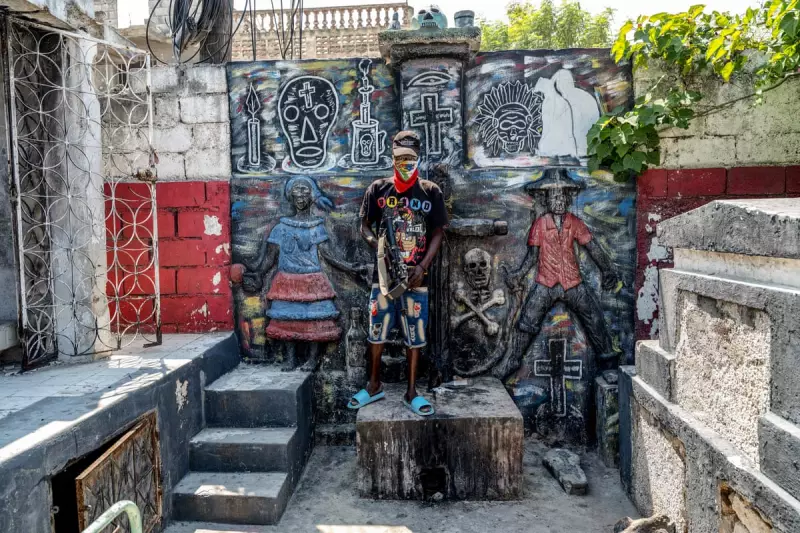
Haiti is experiencing a catastrophic convergence of gang violence and climate-induced collapse that has forced more than 1.4 million people from their homes since January 2025, with nearly half of those displaced being children.
The Human Cost of Haiti's Collapse
Émile Charles represents one of countless victims of this dual crisis. The farmer fled his land in Kenscoff last September when armed men overran his property without warning. Leaving everything behind, he found precarious refuge above Turgeau, one of the few remaining neighbourhoods in Port-au-Prince beyond gang control.
"They arrived without warning and burned our crops," Charles recounts, glasses perched on his head as he gazes across hills dotted with makeshift shelters. "We ran for our lives. Those who didn't leave were killed. Two of my brothers were murdered."
His story reflects a broader tragedy unfolding across the Caribbean nation. Since January 2022, more than 16,000 Haitians have been killed in gang-related violence, while climate disasters have systematically destroyed agricultural livelihoods.
Urban Warfare and Community Resistance
Armed groups now control approximately 90% of Port-au-Prince, with areas like the Grand Cemetery dominated by gangs led by figures like Tilapli. The situation has forced residents into extreme measures for survival.
In the outer suburb of Pétion-Ville, self-defence brigades backed by off-duty volunteer police officers maintain fragile control. Canapé-Vert residents have erected elaborate roadblocks using abandoned trucks and tipped-over containers to deter gang incursions.
Lano Yves, who has staffed a neighbourhood checkpoint for three years, explains their determination: "People can think what they like of us, but we'll defend our neighbourhood to the last drop of our blood. We're fighting the filthy bandits, the terrorists who threaten us every day."
Justice has become increasingly summary, with vigilante lynchings by the Bwa Kalé movement awaiting those unable to justify their presence after the 7pm curfew. Meanwhile, police have escalated their response, using drones to strike armed groups - a tactic that has resulted in 559 fatalities since March 2025, including 11 children according to UN records.
Climate Crisis and Rural Exodus
While urban violence dominates headlines, a quieter crisis is unfolding in Haiti's rural areas. The land can no longer sustain those who work it, driving farmers to migrate in search of survival - what locals call chèche lavi or "seek life".
Haiti ranks among the world's most climate-vulnerable nations, experiencing longer droughts, violent floods, erratic seasons and devastating hurricanes. The Artibonite plain and Central plateau are cracking under extreme heat, with three consecutive failed harvests emptying granaries across the country.
"The land no longer gives," states Doudou Pierre Festile, coordinator of the Acul-du-Nord Peasant Movement near Cap-Haïtien. "When you can't feed your children, you leave for the cities; there, 'another storm' awaits: overcrowding, soaring prices, hunger."
Environmental and Historical Roots
The crisis has deep historical and environmental dimensions. Deforestation for charcoal production - which supplies more than 90% of Haitian households' energy needs - has cleared hillsides, increased erosion and worsened flooding.
Many connect this environmental degradation to Haiti's colonial history. Juslène Tyrésias of the Papay Peasants Movement notes: "Haiti had to cut its trees to pay the ransom," referring to the 150 million franc gold indemnity France demanded in 1825 following Haiti's independence.
Dr Weedjney Destouches, who fled Port-au-Prince violence and now runs clinics from Cap-Haïtien, confirms this historical burden: "The independence ransom remains a central factor in understanding the country's fragility."
International Intervention and Local Realities
International efforts have struggled to stabilise the situation. A Kenya-led multinational security mission approved in 2023 to assist Haitian police had faltered by 2025 amid ambushes and scandals, allowing gangs to regain territory in several neighbourhoods.
The scale of displacement is reshaping Haitian society, with displaced youth becoming easy targets for armed groups. Overwhelmed cities struggle with basic services like waste management, water and sanitation, while makeshift camps like Villambetta in Tabarre become scenes of desperation.
"In Haiti, there's a spaghetti effect: everything gets tangled," says camp spokesperson Venel Nelson. "Our leaders have had dealings with the gangs. If they created the problem, they can't be the solution."
As one resident, Dorival Magdala, starkly puts it: "It's hell here. We talk, we live, but in reality we're already dead."
From the hills of Port-au-Prince to the shores of Cap-Haïtien, Haiti faces simultaneous sieges by armed men and environmental collapse. The nation's future may ultimately be measured by the return of rain, living soil and stability - all of which remain distant prospects for now.





